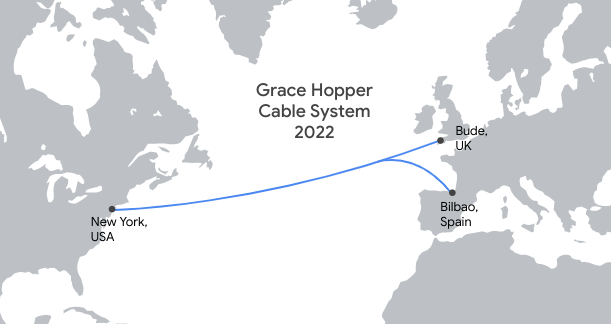Google today announced its plans to build a new subsea cable with landing points in New York in the U.S. and Bude, UK and Bilbao, Spain in Europe. The new cable, named after the pioneering computer scientist Grace Hopper, will join Google’s various other private subsea cables like Curie between the U.S. and South America, Dunant between the U.S. and France, and Equiano between Europe and Africa.
The new cable is scheduled to go online in 2022 and will be built by SubCom, which Google also contracted for work on its Dunant and Curie cables.
Google plans to launch a new Google Cloud region in Madrid in the near future, so it’s maybe no surprise that it is also looking at how it can best connect the region to its global network. The new cable marks Google’s first cable to Spain and its first private subsea cable route to the UK.
The cable will feature 16 fiber pairs, which is a pretty standard number, but as the Google team stresses, it will be the first to use a new switching architecture the company developed in cooperation with SubCom. This new system is meant to provide increased reliability and to enable the company to better move traffic around outages.
Grace Hopper will be Google’s fourth wholly-owned cable. In addition to these private cables, the company is also a member of a number of consortiums that jointly operate cables around the world. In total, Google has now announced investments in 15 subsea cables, though it is also reportedly part of the upcoming Blue-Raman Cable that will run between India and Italy via Israel. The company has yet to confirm its participation in this project, though.
from TechCrunch https://ift.tt/3fdbDhS
via IFTTT

Comments
Post a Comment